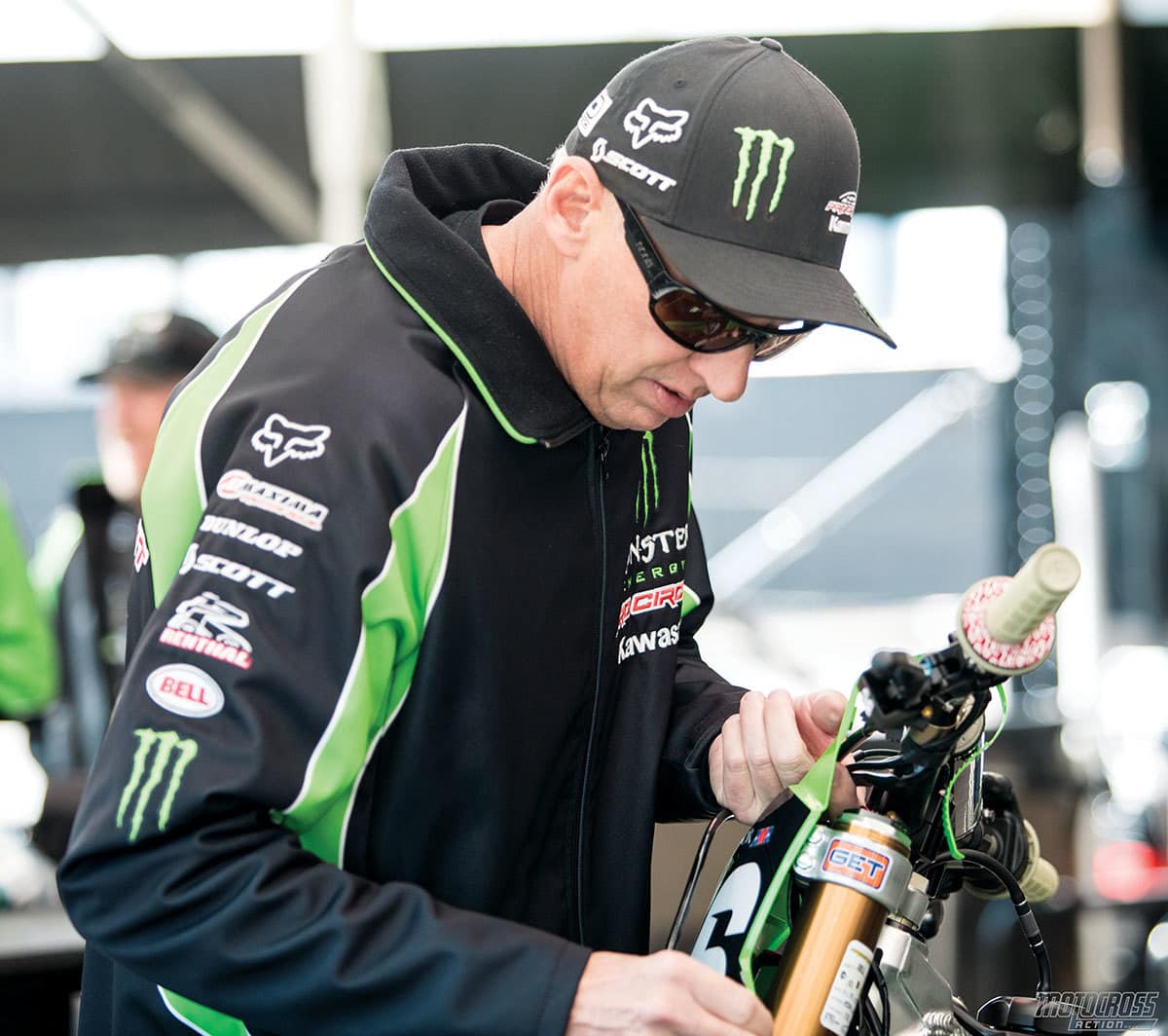BARE BONES: BELIEVE IT OR NOT — STIFFER IS SOFTER

By Bones Bacon
I was talking with Johnny O’Mara this past weekend, and I told him that I used to be horrible at starts until one day at Saddleback I was watching him practice some starts and decided that I was going to adopt his technique. Then, after a little practice on my own and lining up for my next race, I found myself in the lead thinking, “This is awesome.”
When you’re racing, like I was that day, and you see a lot of bumps up ahead, you instantly start bracing for them. At this point your eyes have told your brain that you’re in trouble. That day at Saddleback I rounded the first turn in the lead. Up the next straight I could see a bunch of really big bumps. I was going way too fast for the bumps, and I knew it was going to hurt. Sure enough, the next thing I knew I was lying on the ground in pain. As I was lying there, I couldn’t help but remember how awesome it was to pull the holeshot. It was the best feeling in the world—until my brain took over.
Back in the pits, I decided that my shock had been too stiff and that was why I got kicked over the bars. Truth be told, now that I look back on that combined awesome/terrible moment, I realize that my shock was too soft. As I hit the face of the first bump, I leaned back to get the weight off the front end. When I leaned back, I loaded the shock even more. At this point there was not much travel left in my shock to soak up the bump. So, it kicked me over the bars.
The same situation can happen if you’re coming into a corner or, even worse, down a hill into a corner. Your eyes see the bumps, and they tell your brain that you may be in trouble. You react by clamping on the front brake. With the front brake on, your suspension sucks down and you feel every bump like it’s a jackhammer. Back in the pits after that moto you decide that your forks are too stiff and that you should soften them up before the next moto.
In actuality, you should probably do the opposite. A stiffer fork wouldn’t dive as much, leaving you with more suspension travel (in the plusher part of the stroke) to absorb all of the bumps.
I hear riders talking about their bikes and how their forks are too stiff. They say they beat them up so bad, and they don’t understand why. The fork feels too stiff, yet they have turned the clickers all the way soft and they don’t seem to be getting anywhere.
Remember this phrase—“stiffer is softer.” It seems counterintuitive, but it is true. A stiff spring rides higher in its stroke and doesn’t need as much preload, which means that a stiffer spring can actually be softer at the beginning of the stroke than a softer spring. Why? The soft spring needs more preload or compression damping to hold it up.
The moral of this story is to not let your eyes fool your brain into thinking that this stiff feeling always means what you think it means. Stiff can mean too soft, and too soft can feel too stiff. Sounds simple, doesn’t it? Now just get your brain to realize this, then get your suspension setup better to handle that. Now your eyes won’t send you into panic mode the next time you pull the holeshot and ride over your head.
Jim “Bones” Bacon has tuned the suspension of the biggest names in motocross, including Jeremy McGrath, Ricky Carmichael, Ryan Villopoto and Adam Cianciarulo.





Comments are closed.